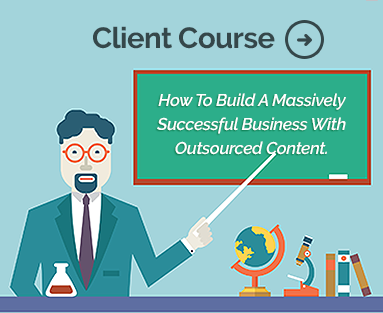There’s no getting around it: SEO is one of the most important tools for running a successful business.
If you don’t have a strong Internet presence, you’ll be missing out on tons of potential business, as well as brand awareness.
Consistently posting high-quality content to your site’s blog is one of the most efficient ways to make sure your audience can find you on search engines.
But, it won’t do you much good to just upload random posts that have no direction to them. You need to have a content strategy to ensure you’re getting the most out of your time.
Not sure where to start? Don’t worry, we’ve got you covered.
Let’s take a look at how to develop a plan for great content.
Develop a Goal
This is the most crucial step in the entire process. If you don’t have a clear, definable goal, you’ll have no foundation for the rest of the strategy.
When you have a solid understanding of why you’re doing something, you’re more likely to be successful at doing it. This can be said about virtually anything in life, but it’s especially true when it comes to creating content.
So, what’s the goal of your blog’s content? Is it to inform your readers? Is it generate more leads?
Or, is it to help build your brand?
These are common purposes behind building blog content, and you aren’t limited in just one.
Furthermore, your goals should have a numerical value to them. Rather than say “I want to make more sales this month,” think “I want to increase sales by 10% over the next 30 days.”
This type of definable aspiration will help you keep your eyes on your objective as you move forward.
Research Your Target Audience
You could offer the best product or service for the most competitive price in your industry, but if you’re trying to sell it to the wrong consumers, you’re not going to do much for your numbers.
Many entrepreneurs don’t take researching their target audience as thoroughly as they should, and it shows.
You should research what your audience likes to do with their free time, what their hobbies are, what their median income is, etc. Anything that might affect how they make a purchasing decision.
But, most importantly, you need to figure out what type of online content they like to read. Naturally, this will help you tailor your content
By the end of your research, you should know your audience like you would an acquaintance in real life.
Zero in on Relevant Keywords
Now that you’ve figured out who your audience is, what they like to read, and how they spend their money, you’re going to have to put in some work to help them find you online.
Without the proper keyword research, you’ll be wasting both time and money trying to desperately bring in site traffic. And, it having quality content on its own won’t help if you don’t have the right keywords.
So, where do you begin? It’s not as difficult as it may seem.
By using a keyword research tool, such as Google’s Keyword Planner, you’ll be able to see what people are searching for, how many people are searching for it, and how competitive that keyword is to rank for.
Since you’ll be essentially starting from the bottom, you’ll want to try and rank for keywords with a high volume and low competition.
Once you’ve chosen a few relevant to your business, it’s time to start (strategically) placing them in your content.
While it’s obvious you need to incorporate them into the body of your posts, don’t forget to use them in the title, SEO description, image text, and headers.
Create a Schedule + Deadlines
If you want to ensure that you maintain your consistency when posting on your site’s blog, creating a calendar is a must.
But, consistency isn’t the only thing a calendar will help you with. You’ll also be able to map out your article topics for the month (or longer).
When you set a deadline, it’s vital that you adhere to it. Missing a post will throw off the rest of your schedule, and will result in you having to rework your calendar.
Consistency is something that people innately look for when on a brand’s website. If you’ve barely posted recently or posted erratically over the past few months, you’ll give off a disorganized vibe that your won’t audience won’t resonate with.
Write, Write, Write
Now that your research and planning are done, all that’s left for you to do is create the content.
As previously mentioned, your content should always be of stellar quality. But, there are a few standards you should always adhere to.
Grammar
Your grammar needs to be perfect. Period.
If you leave even one grammar error in an article, you’ll give off the impression that you don’t bother to edit or proofread your work. The last thing you want is for your audience to think you’re taking shortcuts.
Factuality
If you use a number or a statistic in your writing, you need to have a source for it.
It’s best to look at it this way: if the fact is right, you must have gotten it from a source, so you should provide the source. If the fact isn’t correct, then why would you use it?
Readability
Nobody wants to read a wall of text, and nobody’s going to.
Breaking up your writing into smaller paragraphs and using headers, subheaders, and bullet points go a long way toward keeping your readers engaged.
With all of thee tips in mind, you’ll be ready to post (after one more readthrough).
Great Content Doesn’t Come Easy
But the payoff is always worth it. Taking the time to create great content is one of the best ways for you to connect with your audience and build your brand.
Not everyone has the time (or ability) to write multiple quality posts each week. If you find yourself in this position, take a moment to see what we can do for you.




Comments are closed.